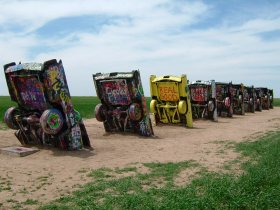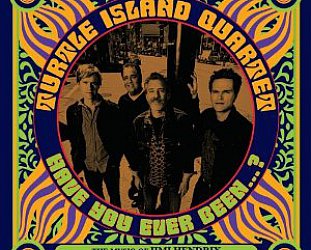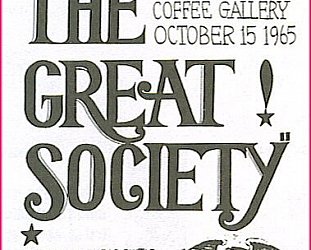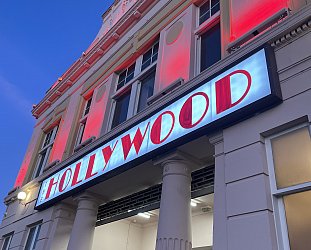Graham Reid | | 2 min read
The Rolling Stones: Route 66

When, in 1946, Bobby Troup wrote what
became his classic song Route 66, he could hardly have
anticipated how popular it would become. After all, he'd really only
written a few words and the hook (“get your kicks on Route 66”,
which may have been his wife's suggestion) and after that he just
filled the song up with the place names like Amarillo, Gallup,
Flagstaff in Arizona (“and don't forget Winona”) along that trip
from Chicago to Los Angeles.
But that famous route – which has
changed over the years as new highways have encroached or the linked
roads have taken a different courses – not only lives on his song
which has been covered by hundreds of artist including Chuck Berry
and the Rolling Stones, but has become emblematic of the freedom a
highway offers.
In that Troup was timely.
His lyrics
celebrating the road came in that post-war economy boom where
Americans could afford car and writers like Jack Kerouac burned with
the impetus to just go. And from chilly Chicago to balmy California
was quite a trip through seven states.
These days you're likely to see 60-year
old investment bankers on hired Harleys gunning down that highway,
their bandanas flying behind them as they try to capture some lost or
imagined youth, and driving Route 66 has become a cliché, albeit an
enjoyable one.
Many have probably been on Route 66
without realising it, a section runs through Santa Monica to the
pier. But that is perhaps the least romantic part of this ribbon of
road which winds, as Troup wrote, “from Chicago to LA, more than
2000 miles all the way”.
This beautifully illustrated
coffee-table page turner-cum-reference book steps back into the
mythology of Route 66 through a series of short essays about specific
sections of the trip, includes wonderfully evocative then-and-now
photos (often sad, images of abandoned diners and gas stations,
formerly elegant eateries now in disrepair) and accounts of those
classic roadside attractions which seem uniquely American: the Gemini
Giant in Wilmington, trading posts, Cadillac Ranch near Amarillo
(caddies buried nose down in a field), strange rock formations and
meteor sites.

Sometimes this view back shows how
naïve, culturally insensitive, architecturally interesting or
innocent the world was as seen through the windshield in the 40s and
50s.
But the intelligent text also
acknowledges all of that and, forlorn though some of these places are
now, they still seem impossibly exotic and loaded with memory and
meaning.
As a celebration of the road, Route 66 and American popular culture this book – subtitled “The Ultimate Road Trip, Back Through Time along America's Main Street” – is fascinating.
And “if you ever plan to motor west” – or east – you could do worse than bone up beforehand about what Troup called “the royal route” in these enticing, multi-coloured pages.
Published by Voyageur Press/Bookreps NZ RRP $69.99







post a comment